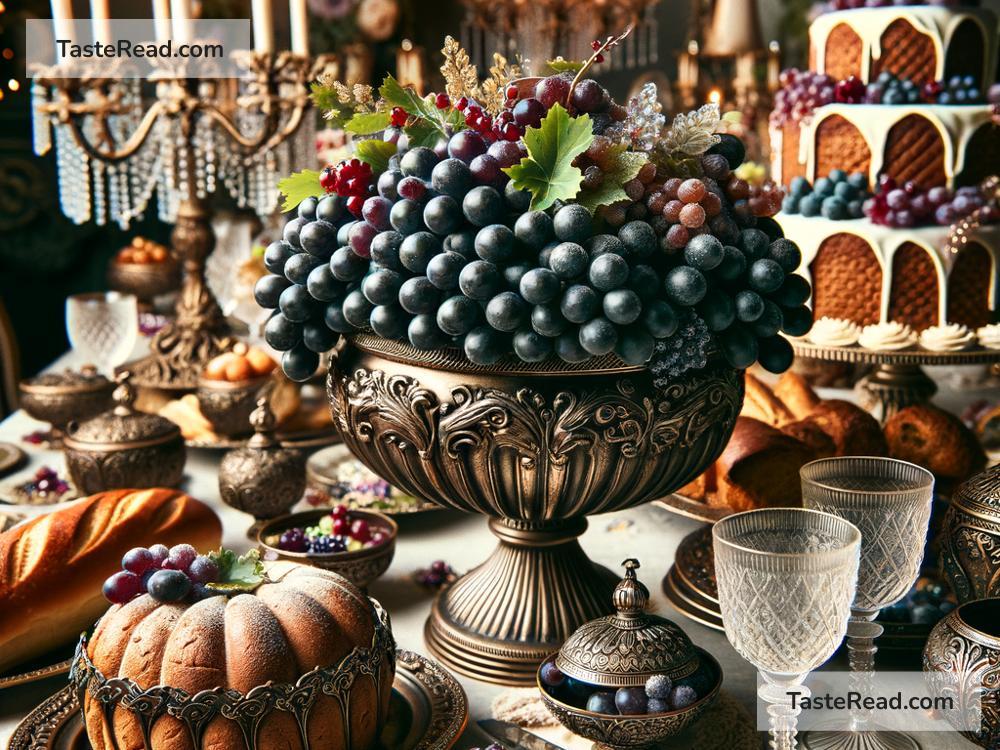How Grapes Became Symbols of Celebration
Have you ever noticed how grapes often appear in celebrations around the world? Whether it’s a glass of wine, a bowl of fruit at a festive table, or even traditions like eating grapes on New Year’s Eve, these tiny fruits play a big role in marking special occasions. But why grapes? How did they become such a popular symbol of joy and celebration? Let’s explore their fascinating journey through history and culture.
Grapes in Ancient Times
The story of grapes begins thousands of years ago. Grapes are one of the oldest fruits cultivated by humans. Archaeologists have found evidence of grape cultivation as far back as 6,000 BC in regions like Mesopotamia (modern-day Iraq) and the Caucasus Mountains (around Armenia and Georgia). Over time, grapes spread to other parts of the world, from Egypt to Greece to Rome.
Ancient people quickly discovered that grapes did more than provide a tasty snack. When left to ferment, grapes turned into wine—a drink that soon became central to social gatherings and religious ceremonies. In these early societies, wine was often seen as a gift from the gods, something that brought people together. Grapes were not only enjoyed as food but also became symbols of abundance and happiness.
Grapes in Mythology and Religion
In many cultures, grapes and wine were linked to mythology and spirituality. For example, the ancient Greeks worshipped Dionysus, the god of wine, joy, and celebration. Festivals honoring Dionysus were filled with dancing, singing, and drinking wine made from grapes. Similarly, in Roman culture, Bacchus (the Roman equivalent of Dionysus) was celebrated in grand feasts known as Bacchanalia.
Religion also played a key role in making grapes symbolic. In Christianity, wine—made from grapes—is used during rituals like communion, symbolizing the blood of Christ. This practice helped solidify the connection between grapes and sacred, celebratory moments. Even in Judaism, grapes represent growth and sweetness, and wine is an essential part of rituals like Passover and Sabbath celebrations.
Grapes Representing Prosperity
One reason grapes became symbols of celebration is their association with prosperity. A healthy, fruitful vine growing full of ripe grapes has always been seen as a sign of abundance. In olden days, people believed that if you had grapes, you had wealth and the ability to share that wealth with others.
Picture a vineyard in autumn, bursting with colorful clusters of grapes, ready to be harvested. This image symbolizes not only the beauty of nature but also the idea of hard work paying off. Harvesting grapes to press into wine is a labor-intensive process, but the result—a delicious, festive drink—makes it all worthwhile. Over time, the connection between grapes, harvests, and celebrations became deeply rooted in cultures worldwide.
Grapes in Modern Celebrations
Even today, grapes continue to symbolize joy and festivity in ways big and small. For example, in Spain and many Latin American countries, there’s a tradition of eating 12 grapes at midnight on New Year’s Eve. Each grape represents one month of the coming year, and people believe that eating them brings luck and prosperity.
Grapes are also a key ingredient in parties and gatherings, whether they’re served fresh on a platter or in the form of wine or sparkling grape juice. From weddings to birthdays to graduation celebrations, grapes are often present—and they still represent abundance, unity, and happiness.
Their versatility also adds to their symbolic power. Grapes can be turned into wine for sophisticated celebrations, dried into raisins for tasty treats, or enjoyed fresh for a simple, healthy snack. No matter the occasion, grapes seem to fit just right, making them a universal choice for marking life’s special moments.
Grapes Around the World
The love for grapes spans cultures and continents. Different countries have unique traditions involving grapes. In Italy and France, for example, wine culture is a major part of their heritage, and grape harvest festivals celebrate the fruit’s beauty and importance. Farmers and communities come together during these festivals to express gratitude for their crops and enjoy the first taste of freshly made wine.
In countries like Greece, grapes are a sign of hospitality. It’s common to serve grapes or grape-based treats when welcoming guests. This idea of sharing grapes as a gesture of goodwill reinforces their connection to celebration and togetherness.
Conclusion
So, why are grapes such powerful symbols of celebration? It comes down to their rich history, their connection to prosperity, and the joy they bring to people’s lives. From ancient mythology to modern traditions, grapes have been seen as fruitful and festive, embodying the idea of abundance, happiness, and togetherness.
The next time you see grapes at a party or enjoy a glass of wine, think about their journey through history. These small fruits have played a big role in human culture, reminding us to celebrate life’s sweet moments. And no matter where you are in the world, grapes will always remain a timeless symbol of joy and celebration. So, raise a glass (or a bunch of grapes) and toast to the many ways we honor life, love, and happiness! Cheers!


